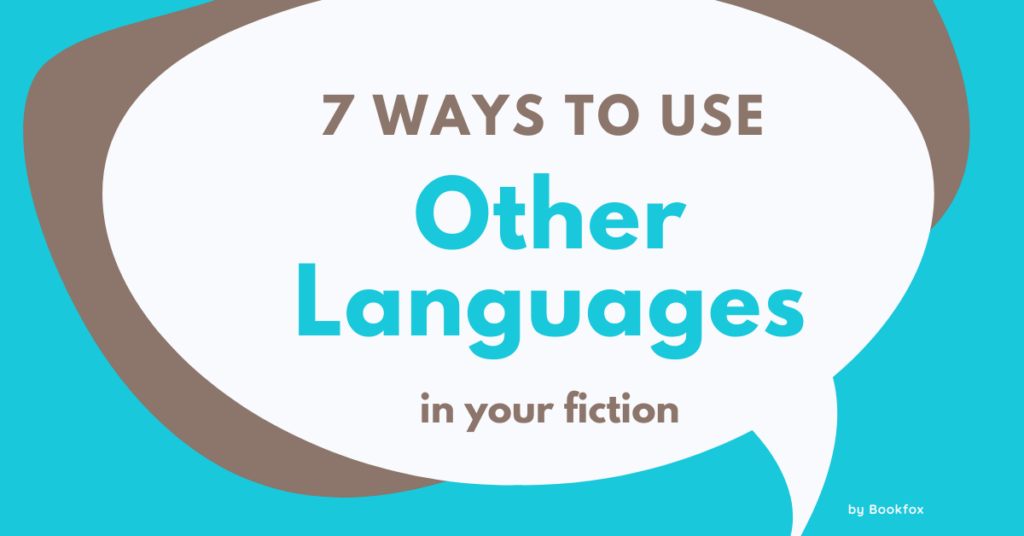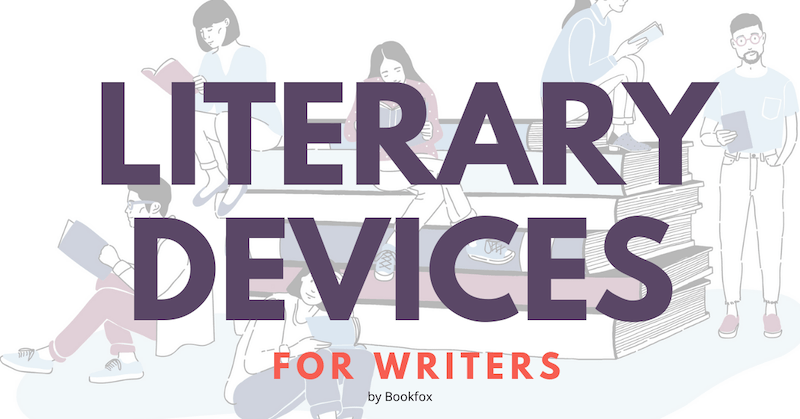 Literary devices aren’t something you learn in English class and then forget about for the rest of your life.
Literary devices aren’t something you learn in English class and then forget about for the rest of your life.
They’re a beating, thumping heart of the fiction writer’s toolbox.
If you don’t know these literary devices below, you’re probably using some of them already. But if you learn by reading the examples, you’ll be better prepared to entertain the reader with some stylistic devices.
I started putting together a list of literary techniques including their definition and function, looking for new ways to use old favorites. Not just examples from the canon, but examples from contemporary writers and popular fiction, too. I looked for inventive techniques — the obscure, the scholarly, the mind boggling.
Then I organized the devices according to problems writers face.
So, when a monotonous passage emerges, diagnose and treat it with the help of this list!
4 Literary Devices about Comparison

When descriptions get too lengthy and create a lull, when you’ve described the same character with the same words again and again, try comparisons. Comparisons invite readers to think about elements of the story in new ways and add layers of meaning.
1. Simile
Simile uses the words ‘like’ or ‘as’ to make a direct comparison between two unlike things. Similes can establish moods and make imagery more complex.
Example: “I used to think my place of employment, Glam, looked like the view from inside a casket.” – Carmen Maria Machado, “Real Women Have Bodies”
Danger: Don’t use similes too often. This is the easiest comparison to write, and it’s often used most often by beginning writers.
2. Metaphor
Metaphor equates one thing to another: Something is something else. This type of comparison inspires readers to think of similarities between two (mostly) unlike entities.
A metaphor is a more sophisticated simile. It’s saying X is Y, rather than X is like Y.
Example:
I’m a genie in a bottle
You gotta rub me the right way
– Christina Aguilera, “Genie in a Bottle”
3. Metonymy
Metonymy substitutes one word for another. It’s a sneaky way to compare two things — much more advanced than a metaphor, because the reader has to figure out what the missing word is.
Example: Winston Churchill’s famous “Sinews of Peace” speech popularized the metonymy of iron curtain: “From Stettin in the Baltic to Trieste in the Adriatic, an ‘Iron Curtain’ has descended across the continent.”
By “iron curtain,” Churchill meant communism. But he never mentions the word “communism.” You have to figure it out.
Danger: Readers can become confused if they can’t figure out what word your metonym is referring to.
4. Synecdoche: A part that stands in for the whole. Synecdoche is like the weird cousin of metonymy. You don’t see it very often, but you remember it when you do.
Examples: Tupac Shakur uses metonymy and synecdoche to illustrate his capacity for resistance:
Did you hear about the rose that grew
From a crack in the concrete?
Proving nature’s law is wrong?”
– “The Rose that Grew from Concrete” Tupac Shakur
The “Rose” is Tupac. That’s an example of metonymy.
The “concrete” is the inner city. That’s an example of synecdoche, because concrete is part of the inner city.
3 Literary Devices about Contrast:
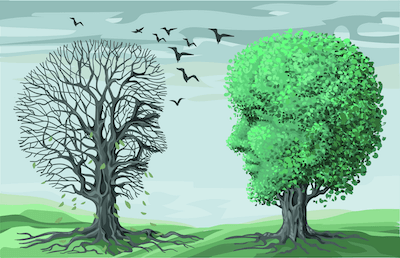 Sometimes a descriptive passage can cause a story to stall. In this case, you might try literary devices that create contrast. In the examples below, we’ll explore how authors invite drama through unlikely pairings and use contrast to create the kind of tension readers want.
Sometimes a descriptive passage can cause a story to stall. In this case, you might try literary devices that create contrast. In the examples below, we’ll explore how authors invite drama through unlikely pairings and use contrast to create the kind of tension readers want.
5. Juxtaposition
Juxtaposition is when two opposing ideas, settings, or characters are described in close proximity.
To highlight her protagonist’s misery, Donna Tartt juxtaposes two very different settings, outside her hotel room and then inside it.
Example: “Outside, all was activity and cheer. It was Christmas, lights twinkling on the canal bridges at night; red-cheeked dames en heren, scarves flying in the icy wind, clattered down the cobblestones with Christmas trees lashed to the backs of their bicycles. In the afternoons, an amateur band played Christmas carols that hung tinny and fragile in the winter air. [Inside, it was] chaotic room-service trays; too many cigarettes; lukewarm vodka from duty free. During those restless, shut-up days, I got to know every inch of the room as a prisoner comes to know his cell.” — The Goldfinch
6. Antithesis
Antithesis pairs opposite words (usually with a conjunction) and a shared grammatical structure.
Example: “What if I am rich, and another is poor — strong, and he is weak — intelligent, and he is benighted — elevated, and he is depraved? Have we not one Father? Hath not one God created us?”
—William Lloyd Garrison, No Compromise with the Evil of Slavery
7. Paradox
With Paradox, the writer puts together seemingly contradictory statements that may not make sense on the first read. Upon further investigation, these statements contain a universal truth.
Elizabeth Bishop’s “One Art” provides the following paradoxical statement:
Example: “The art of losing isn’t hard to master.”
Losing seems like the direct opposite of art — it requires no thought or creativity, just a certain level of mindlessness. Expertise and losing also seem at odds. But after continuing through the poem, the reader learns that, to carry on with our human existence, we must endure a great deal of loss. We lose car keys, memories, homes, loved ones, and at times, even ourselves, and so, the act of living is a testament to our ability to master loss.
4 Literary Devices of Repetition

Need an image to stand out? Repeat it. Repeat it again! Repeat it loud. The following examples show how authors use repetition to emphasize a point, an image, or an idea.
8. Anaphora
An anaphora a word or phrase is repeated at the start of a group of sentences.
Example: In “Crazy They Call Me,” Zadie Smith uses anaphora to underscore Billie Holiday’s difficulties in connecting with people: “A dog don’t cheat. A dog don’t lie.”
You can even do this for an entire paragraph, repeating the same word or words at the beginning of each sentence.
9. Refrain
A refrain is repeated multiple times throughout a body of work to add emphasis or coin a rallying cry.
Example: “Nobody ever helps me into carriages, or over mud-puddles, or gives me any best place! And ain’t I a woman? Look at me! Look at my arm! I have ploughed and planted, and gathered into barns, and no man could head me! And ain’t I a woman? I could work as much and eat as much as a man—when I could get it— and bear the lash as well! And ain’t I a woman? I have borne thirteen children, and seen most all sold off to slavery, and when I cried out with my mother’s grief, none but Jesus heard me! And ain’t I a woman?”
— Sojourner Truth, “Ain’t I a Woman”
10. Leitmotif
Leitmotif originated as a term to describe a melody repeated throughout an opera, usually when a villain entered the stage. Although not an opera, we see an example of leitmotif in Jaws. When the signature dun-dun… melody plays, we know the great white shark will soon make an appearance.
Through this repetition of sound, leitmotif creates suspense and foreshadows a coming problem. In literature, leitmotif includes repeated ideas, images, actions, or poetic structures rather than melody.
Cormac McCarthy uses leitmotif to characterize Judge Holden. Each time Holden appears, McCarthy’s prose turns to polysyndeton: the words bend to a chaotic and lawless sound foreshadowing the coming bloodshed or other moral depravity executed by the judge.
Example: “Watching him across the layered smoke in the yellow light was the judge. He was sitting at one of the tables. He wore a round hat with a narrow brim and he was among every kind of man, herder and bullwhacker and drover and freighter and miner and hunter and soldier and pedlar and gambler and drifter and drunkard and thief and he was among the dregs of the earth in beggary a thousand years and he was among the scapegrace scions of eastern dynasties and in all that motley assemblage he sat by them and yet alone as if he were some other sort of man entire and he seemed little changed or none in all these years.” — Cormac McCarthy, Blood Meridian
11. Tautology
Tautology is defining something by repeating the thing defined. It’s meaningless. For instance, tautology may repeat the same words or use words with the same meaning.
Example: “‘Isn’t the water wet today, Mary,’ the older girl asked.”
- Alice McDermott, Charming Billy
“Either it will rain tomorrow, or it won’t rain.”
“If we do not succeed, we run the risk of failure.” – Dan Quayle.
Danger. Don’t try to use tautology from your 3rd person narrator. The perfect place for a tautological statement in fiction is by a character who is a fool or a comedian.
4 Narrative Literary Devices
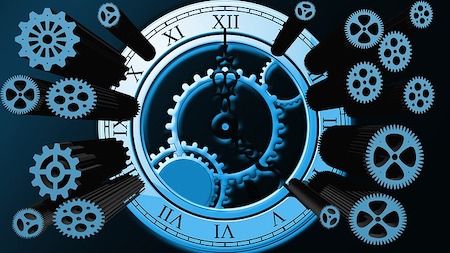
When things get too linear or predictable, try one of these narrative literary devices.
12. Flashforward
An omniscient narrator zooms ahead in time, allowing the reader to experience a character’s future. As a character grapples with their (often unfortunate) destiny, the writer creates suspense. Readers wonder, “What circumstances lead to this future scene?”
In The Known World, Edward P. Jones builds suspense as he flashes forward in time:
Example: “Tessie would soon be six years old, and being the child of her parents that she was, she listened and stopped skipping. Tessie would live to be ninety-seven years old and the doll her father was making her would be with her until her last hour. She and the doll, long missing the corn-silk hair, Elias, her father, had put on it, would outlive two of her children and it would outlive her.”
After reading this passage, readers are left to guess what happened between now and then: Why did Tessie outlive her children? Why did she clutch the corn husk doll in her last hours?
13. Foreshadowing
An author foreshadows by hinting at future events. Foreshadowing engages readers as they wonder what will happen next – will the clues add up to the inferred fate? Or not? Dialogue, atmosphere, and character actions can be used to foreshadow.
Example: “Through the window, hung with Dutch curtains, a butterfly flew in and landed on the table. It stood motionless, its wings together waiting with the fatalistic calm of a creature that lives for only a short time.” — Isaac Bashevis Singer, “The Boarder”
Who does the butterfly represent? Someone’s about to die — this butterfly just foreshadowed it.
14. Flashbacks
The story transports the reader back in time to experience a moment in the character’s memory.
Example: In The Handmaid’s Tale, Margaret Atwood makes frequent use of flashback to show Offred’s life prior to The Republic of Gilead:
“I lie, then, inside the room, under the plaster eye in the ceiling, behind the white curtains, between the sheets, neatly as they are, and step sideways out of my own time. Out of time. Though this is time, nor am I out of it.
But the night is my time out. Where should I go?
Somewhere good.
Moira, sitting on the edge of my bed, legs crossed, ankle on knee, in her purple overalls, one dangly earring, the gold fingernail she wore to be eccentric, a cigarette between her stubby yellow-ended fingers. Let’s go for a beer.”
15. Cliffhanger
Readers are left with a sense of suspense at the end of a chapter or series installment, causing them to ask, “What’s next?” Cliffhangers encourage readers to continue reading or even binge material.
Example: Almost every chapter in Suzanne Collins’s The Hunger Games ends in a cliffhanger. For instance, the opening chapter describes the reaping, where two adolescents from each district are chosen to fight to the death. Near the end of the chapter, the reader learns that Primrose Everdeen — Katniss’s beloved but decidedly un-gladiator-like sister — is chosen to participate in the games. This causes readers to wonder, will Prim die in the games? Will Katniss take her place? And inevitably, this uncertainty inspires readers to keep turning pages.
3 Substitutionary Devices

In the age of cancel culture and incendiary politics, it can be tough to articulate certain ideas without offending. Sometimes the best way to say what you want to say is by saying something different entirely.
16. Allegory
At first the narrative may seem novel. But after a closer look, the reader sees a story within the story and identifies parallels to existing societal structures, political events, or cultural beliefs.
Example: In Arthur Miller’s The Crucible a group of girls dances in the woods of 17th century Salem, Massachusetts. Based on this behavior, townspeople accuse the girls of witchcraft, despite a lack of evidence. Ultimately, the townspeople’s unfounded suspicions lead to disastrous fates for the girls on trial. Superficially, this story seems like a re-telling of the Salem Witch Trials, but, on closer inspection, readers realize it is an allegory for the McCarthy Era: a period during the 1950s where many Americans were wrongfully accused of co-conspiracy with Soviet Union Communists. Artists, intellectuals and government workers were tried and blacklisted, not because of evidence of treason, but because of the subversive nature of their art or participation in political protests.
17. Allusion
A quick, indirect reference to another literary work, person, place or thing. Allusions are ready-made images, allowing a writer to make commentary through comparisons without lengthy descriptions.
Example: A character in “Stanville” slyly criticizes the protagonist’s living quarters by comparing them to that of the Unabomber:
“Gordon found a place to rent sight unseen, a cabin up the mountains from Stanville proper, in the western Sierra foothills. The cabin was a single room with a woodstove. It would be his Thoreau year, he wrote to his friend Alex, sending him the realty link.
“Your Kaczynski year,” Alex wrote back, after looking at the photos of the cabin.” – Rachel Kushner
18. Euphemism
Through the use of euphemism, writers can describe information society considers too taboo or too harsh. Euphemism offers a way to open a dialogue typically off limits.
Example: In Ernest Hemingway’s “Hills Like White Elephants,” the euphemism “letting the air in” is used to describe the act of terminating a pregnancy:
“The girl looked at the ground the table legs rested on.
‘I know you wouldn’t mind it, Jig. It’s really not anything.’
‘It’s just to let the air in.’
The girl did not say anything.
‘I’ll go with you and I’ll stay with you all the time. They just let the air in and then it’s all perfectly natural.’”
3 Literary Devices of Sentences
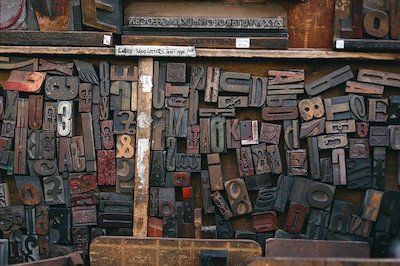
If the flow seems off, narrow focus and look at passages granularly. The shape of a sentence can provoke thought and move a narrative. Here’s what happens when authors focus sentence-by-sentence, word-by-word, or even syllable-by-syllable:
19. Polysyndeton
Instead of using the oxford comma in a serial list, (tomatoes, plums, and radishes) try using coordinating conjunctions (tomatoes and plums and radishes).
Example: By using polysyndeton, Cormac McCarthy emphasizes the distance his characters travel: “They passed under flowering apple trees and passed a log crib chinked with orange mud and forded a branch and came in sight of an aged clapboard house that stood in blue shade under the wall of the mountain.” – Cormac McCarthy, Child of God
20. Parallelism
Parallelism is the repetition of structure. This technique creates symmetry in sound, and allows authors to showcase similarities.
Example: “her hungry pretty face turning to me, / her pitiful beautiful untouched body, / his arrogant handsome face turning to me, / his pitiful beautiful untouched body” – Sharon Olds, “I Go Back to May 1937”
21. Amplification
Zero-in on a specific detail, and describe it fully. Usually a short sentence or phrase gets amplified by multiple lines of text. By writing about a detail in this way, authors give power and emphasis to seemingly small features of the story.
Example: “What he first noticed about Detroit and therefore America was the smell. Almost as soon as he walked off the plane he caught it: an acrid odor of wood ash. The smell seemed to go through his nostrils and take up residence in his head. In Sweden, his own country, he associated this smell with autumn, and the first family fires of winter, the smoke chuffing out of chimneys and settling familiarly over the neighborhood. But here it was midsummer, and he couldn’t see anything burning.” — Charles Baxter, “The Disappeared”
22. Litote
Use negative words, like “no” or “not” before a positive phrase. Depending on the context, this technique can downplay significance or infuse modesty, irony or trickery.
Example: “That night I promised myself I’d never be wordless when you needed me to speak for you.” – Ocean Vuong, On Earth We’re Briefly Gorgeous
3 Advanced Narration Techniques

Has your story already been told a thousand times? Try adding new perspective through an unusual mode of narration.
23. Delayed Decoding
Joseph Conrad narrates a character’s sensory experience before making clear what the experience means. Ian Watt calls this technique delayed decoding because Conrad’s description mimics the brain’s delay as it struggles to process difficult external surroundings. Delayed decoding works as a suspense-building tool because it causes readers to question, “What is really going on here?”
Example: “Sticks, little sticks, were flying about—thick: they were whizzing before my nose, dropping below me, striking behind me against my pilot-house. All this time the river, the shore, the woods, were very quiet—perfectly quiet. I could only hear the heavy splashing thump of the stern-wheel and the patter of these things. We cleared the snag clumsily. Arrows, by Jove! We were being shot at!” — Joseph Conrad, Heart of Darkness.
24. “Absent” third-person narrator
Alain Robbe-Grillet created the concept of the absent third-person narrator in his novel, Jealousy. In the novel, an envy-riddled husband observes his wife’s interactions with a neighbor. Only, it’s never explicitly stated that the husband is the narrator. The husband’s existence is inferred through subtle clues. And with the husband’s relative absence, it becomes difficult for the reader to distinguish which passages are unbiased observations of the world and which are invented scenarios based on the narrator’s jealousy. The narrator describes his world in painstaking, mind-bending detail leading readers to believe they are watching the exact world the narrator experiences. In the excerpt below, the absent narrator describes the verandah he continually watches:
Example: “Now the shadow of the column — the column which supports the southwest corner of the roof — divides the corresponding corner of the verandah into two equal parts. This verandah is a wide, covered gallery surrounding the house on three sides. Since its width is the same for the central portion as for the sides, the line of shadow cast by the column extends precisely to the corner of the house; but it stops there, for only the verandah flagstones are reached by the sun, which is still too high in the sky.” — Alain Robbe-Grillet, Jealousy
25. Inanimate Narration
An object tells the story, giving the reader a unique point of view, free from pesky, human musings.
Example: By letting a bag of crack cocaine, affectionately named Scotty, tell the story (in a voice strangely reminiscent of Sam L. Jackson), James Hannaham illustrates a character’s loss of power over her addiction: “Maybe I attract a certain kinda person. Folks always saying that I do. Doctors talking ‘bout how people brain chemistry make some of ‘em fall in love harder with codependent types. But I feel a obligation to Darlene. Out of all my friends, and, baby, I got millions — she make me wonder the most if I done right by her.” — Delicious Foods by James Hannaham
5 Funny Literary Devices
 Sometimes a scene is too heavy — weighed down by a horrible or uncomfortable event. In these instances, try infusing a little humor to lighten the reader’s burden.
Sometimes a scene is too heavy — weighed down by a horrible or uncomfortable event. In these instances, try infusing a little humor to lighten the reader’s burden.
26. Ambiguity
Ambiguity relies on multiple possible readings of a single phrase. Ambiguity is created by using words with multiple meanings or vague pronouns. The humor happens when a mix-up occurs based on the unclear meaning.
Example: In the example below, Douglas Adams plays with the dual meaning of the word ‘drunk:’
“‘You should prepare yourself for the jump into hyperspace; it’s unpleasantly like being drunk.’
‘What’s so unpleasant about being drunk?’
‘Just ask a glass of water.’”
–Douglas Adams, The Hitchhiker’s Guide to the Galaxy
27. Puns
Puns rely on double meaning of a word for humorous effect. Usually, the architect of a pun is aware of the double meaning. Puns can also be used to indirectly point out complexities of a situation, as is the case in this example below.
Example: In Harper Lee’s To Kill a Mockingbird, Atticus Finch says, “This case is as simple as black and white.” The phrase ‘black and white’ indicates the case should be simple – the moral and lawful solution being obvious. He also uses ‘black and white’ to describe the literal racial prejudice spurred by the book’s landmark trial.
28. Hyperbole
An exaggeration, a description that is — as the kiddies would say — a bit “extra.”
Example: “Anna hailed from an industrial town outside of Warsaw and had front teeth the size of tombstones.” – David Sedaris, Me Talk Pretty One Day
29. Oxymoron
Two words with opposing meanings are thrust together. By letting two opposites co-exist, writers invite humor and unforgettable images.
Example: “He had signal-flag ears, a chinless chin, a scrunched forehead…” – Denis Johnson, “Strangler Bob”
30. Irony
Irony is a concept all about opposites. Three types of irony are common in literature — dramatic, situational, and verbal.
31. Dramatic Irony
Dramatic Irony relies on the audience’s knowledge that an event will take place, however, the story’s characters are unaware of this event. The humor comes when the characters say something in direct opposition to their fate.
Example: In Tom Stoppard’s Rosencrantz and Guildenstern are Dead, Guildenstern says, “I think I’ll spend most of life on boats…One is free on a boat. For a time. Relatively…” As the title implies, Rosencrantz and Guildenstern are captured and killed after this little boat ride. Thus, they will not spend most of life on boats.
32. Situational Irony
Situational Irony occurs when an outcome or event has the opposite result readers were expecting.
Example: “The only way I can make Selina want to go to bed with me is by not wanting to go to bed with her.” – Martin Amis, Money
33. Verbal Irony
Verbal irony occurs when the intended meaning opposes what is actually being said.
Example: “‘If your daughter should have a dangerous fit of illness, if she should die, it would be a comfort to know that it was all in pursuit of Mr. Bingley and under your orders’” — Jane Austen, Pride and Prejudice
3 Poetic Literary Devices
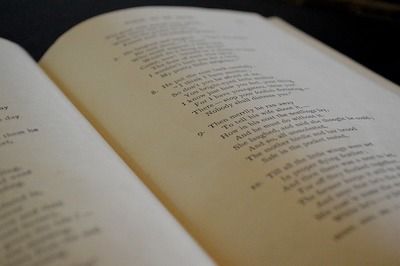 Is the prose sounding clunky, pedestrian, or one dimensional? Use poetic devices to create flow and propel your reader through the story.
Is the prose sounding clunky, pedestrian, or one dimensional? Use poetic devices to create flow and propel your reader through the story.
34. Alliteration
Alliteration is the repetition of sounds at the start of a group of words.
Example: “The rest of Harrison’s appearance was Halloween and hardware.” — Kurt Vonnegut, Harrison Bergeron
35. Assonance
Assonance is the repetition of vowel sounds within words.
Example:
“In Vietnamese, the word for grenade is ‘bom,’ from the French ‘pomme,’
meaning ‘apple.’
Or was it American for ‘bomb?’”
– Ocean Vuong, Night Sky with Exit Wounds
36. Onomatopoeia
Onomatopoeia is a word that sounds like its meaning. This technique gives readers a multi-sensory experience, allowing them to hear the scene through the author’s word choice.
Example: In Shel Silverstein’s Where the Sidewalk Ends, he uses onomatopoeia to illustrate the sounds of The Fourth: “The / ZANG! / Fourth / WHOOSH! / Of / BAROOM! / July / WHEW!”
